SAE Industrial Felt 101: The Basics
SAE Industrial Felt 101: The Basics
SAE Industrial Felt - also known as technical felt and/or pressed felt - is manufactured by mixing, wet felting, fulling and drying, to produce a non-woven roll of fiber. Our Industrial Felt has a wide variety of characteristics that meet SAE’s very strict tolerances on wool content, thickness, and weight.
SAE is a standard of measurement applied to felts used for industrial applications. These applications often require high durability with resistance to abrasion and wear. SAE started off as the Society of Automotive Engineers, however it has morphed to encompass all engineering. Some people refer to it as Standard American Engineering - because it is imperial.

SAE Felt Characteristics

Wool Content
Wool percentage is based off of new wool in the felt. The remaining fibers are made of something called card waste this can consist of anything including recycled wool, cotton, rayon/viscose (wood fibers) and even bits of vegetable matter and synthetics. This material is used as filler to either reduce the cost of the felt or impart certain desired characteristics to the finished material.

Density - Stiffness/Hardness
Density, which determines the hardness of the felt, is one of the main characteristics between the different SAE felt grades. Here is a list from stiffest/hardest to most pliable/softest:
F-1 / F-3 / F-50 / F-51
F-5 / F-7 / F-55
F-10 / F-15
F-26

Tolerances
Tolerances in SAE felts are based off of the wool content and density of the fiber. Wool is prone to contract or swell slightly depending on temperature, changing the thickness and weight of the fiber. Cutting the wool can also shrink the fiber creating a slight dimensional tolerance.

Applications
Some popular applications include, but are not limited to - anti-vibration pads, floor and furniture protection, acoustic paneling and sound absorption, musical instruments (mallets and xylophone), equestrian saddle pads, speaker felt, interior design, gaskets and seals, packing, and much more.

Durability
Wool fibers have small barbs on them, which allow them to interlock when being felted. The more friction, moisture and pressure is applied during the felting process, the denser and more durable the felt becomes. High density SAE felts have the ability to withstand long periods of wear and pressure.

Color
SAE felts are made from natural sheep wools and not dyed. Similar to human hair, sheep hair comes in a variety of colors, shades and textures. This means that SAE felt colors will vary from lot to lot. For designer applications requiring consistency in color and finish we recommend using 100% wool designer felt instead of SAE felt.
SAE Felt Breakdown


SAE Felt Grades




F-1
SAE F-1 Felt has the highest durability of any industrial felt. Highly resilient, F-1 felt is recommended for uses where impact, pressure, friction, and abrasion are constant. Washers, wicks, door bumpers, and polishing blocks are among its many possible applications. While not recommended if you require a soft or pliable material, F-1 is great for low viscosity oil absorption and retention.
Wool Content: Min. 95% wool
Density: High, 0.32-0.36 g/cm³ (539.4-606.8 lb/yd³)
Color: Off-White to Beige
Link: F-1 Industrial Felt



F-3
SAE F-3 Felt is one of the most durable industrial felts with an 85% wool content. F-3 serves the same general purposes as F-1 but is slightly less dense. Its advantages include excellent vibration absorption, resistance to abrasion and wear, and applications that require a coarse wool. F-3 felts is suitable for precision applications such as vibration mounts, precision lubrication wicking, oil seals, bumpers, gaskets, automobile, aircraft and machinery components.
Wool Content: Min. 85% wool
Density: High, 0.32-0.36 g/cm³ (539.4-606.8 lb/yd³)
Color: Natural Gray to Brown
Link: F-3 Industrial Felt




F-5
SAE F-5 Felt is a heavy-duty 95% wool industrial felt. Slightly less dense than harder F-1 and F-3 felts, F-5 is an ideal felt for floor mats, seat pads, and other applications that require solid cushioning. Its other applications include dust shields, wipers, grease retainer washers, wicks, and vibration mountings.
Wool Content: Min. 95% wool
Density: Medium-High, 0.25-0.27 g/cm³ (421.4-455 lb/yd³)
Color: Off-White to Beige
Link: F-5 Industrial Felt



F-7
SAE F-7 Felt is a heavy-duty felt with 80% wool content. Due to its high density, F-7 is resilient enough to handle constant impact, pressure, and movement. This is why we recommend it for vibration mountings, grease retainer washers, wipers, and dust shields in automotive parts. This felt is also an ideal material for grease retainer washers and wicks, due to its excellent oil absorption and retention.
Wool Content: Minimum 80% wool
Density: Medium-High, 0.25-0.27 g/cm³ (421.4-455 lb/yd³)
Color: Natural Gray to Brown
Link: F-7 Industrial Felt




F-10
F-10 Felt is an SAE grade industrial felt made with a minimum wool content of 80%. F-10 is recommended when you require excellent grease and oil retention in your application. This felt is also great for dust shields under less severe operating conditions and where pressure and impact are not important factors. Its crafting uses include storyboard walls, seat cushions, and embroidery protection.
Wool Content: Minimum 80% wool
Density: Medium-Low, 0.17-0.20 g/cm³ (286.5-337.1 lb/yd³)
Color: Off-white to Beige
Link: F-10 Industrial Felt



F-15
SAE F-15 Felt is suitable for the same applications as F-10 felt, but has a slightly lower wool content. Applications include sound deadening chassis strips, spacers, dust liners, and for mechanical purposes where abrasion and wear are not important factors. Other applications include acoustic panels, protective padding (such as saddle pads, blankets, and cutting table protectors) absorbers, packing material, sound dampening insulation, and cushioning material.
Wool Content: Minimum 55% wool
Density: Low, 0.17-0.20 g/cm³ (286.5-337.1 lb/yd³)
Color: Natural Gray to Brown
Link: F-15 Industrial Felt



F-26
SAE F-26 Felt is an industrial wool felt with low density. While this grade of felt is not recommended for mechanical applications, it is ideal for packing or padding when held in place between other materials. Non-mechanical applications include crate liners, sound absorption, sports equipment padding, and padding between parts.
Wool Content: Minimum 45% wool
Density: Low, 0.14-0.17 g/cm³ (236-286.5 lb/yd³)
Color: Natural Gray to Brown
Link: F-26 Industrial Felt




F-50
SAE F-50 industrial wool felt is a highly dense felt, similar in density to F-1, and best suited to applications that require an accurate, thin, smooth high-grade felt. This felt grade is also used for ball and roller bearing oil retainer washers and small dust-excluding washers. Use this felt in installations where it will not be compressed, for feeding low viscosity or light oil, and where strength, durability, and hardness are required.
Wool Content: Minimum 95% wool
Density: High, 0.32-0.36 g/cm³ (539.4-606.8 lb/yd³)
Color: Off-white to Beige
Link: F-50 Industrial Felt



F-51
SAE F-51 Felt is a high-density 92% gray wool industrial felt. F-51 felt is similar to F-3 felt but made in thicknesses less than 1/8 inches and used where a thin, high-grade wool felt is required. Common applications include ball and roller bearings, oil retainer washers, and smaller dust excluding washers. We recommend it for applications where an accurate, coarse felt is required.
Wool Content: Minimum 92% wool
Density: High, 0.32-0.36 g/cm³ (539.4-606.8 lb/yd³)
Color: Natural Gray to Brown
Link: F-51 Industrial Felt


F-55 Black
SAE F-55 felt is a moderate-density felt used for anti-squeak strips and for lining cemented to fiberboard or metal panels. F-55 felt is also used in similar applications as F-7 felt, when the thickness required is less than 1/8 inches. Other applications include dust shields, gaskets, lubricators, acoustic material, wicks, and wipers.
Color: Black
Wool Content: Minimum 80% wool
Density: Medium-High, 0.25-0.27 g/cm³ (421.4-455 lb/yd³)
Price: $$
 USA
USA CANADA
CANADA EUROPE
EUROPE
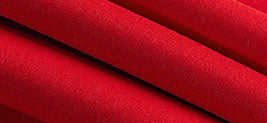
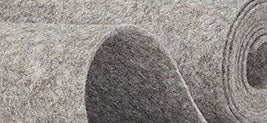

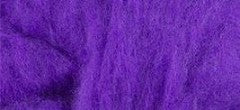
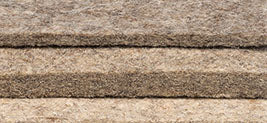
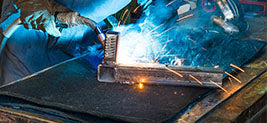
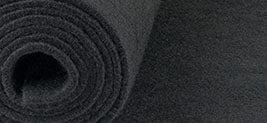
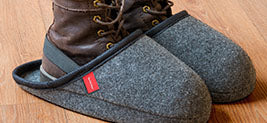
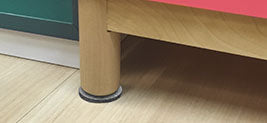
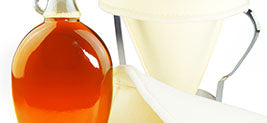
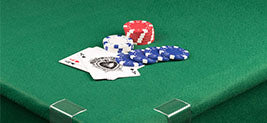
What would you recommend for making pendant lights?
I am looking for the best felt that will hold up to the use of lapidary rock polishing in vibro-lap equipment.
Thank You!
Hi Margaret! We would recommend a higher density SAE Industrial Felt to make tote bags, such as our F-1 or F-3 grades. This is because denser felt will have less stretch to it. The two grades mentioned (F-1 and F-3) are the closest to our 100% Wool Designer Felt, which is our main recommendation for making bags. If you have any further questions feel free to email us at sales@thefeltstore.com.
What grade wool would be useful for making tote bags?
Hi Rainer! We do not carry the type of felt that is normally used for pennants. Seize felt is most commonly used and this felt has a stiffener in it to make it the correct stiffness. An alternative would be to use our 1.2mm 100% Wool Craft Felt as it is dense and will hold its shape. It is not the correct stiffness though. But you can use a starch spray (like what is used to stiffen shirt collars) on the back of the felt to make it more stiff. It will also allow you to screen print or iron on decals onto the felt. If cost is a concern, Premium Wool Blend Felt or Rayon/Viscose felt can also be used and the same information would apply.
Leave a comment